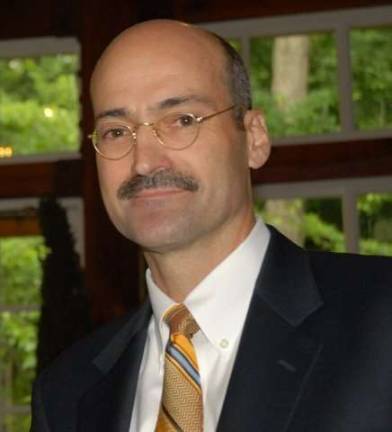Caring for the City’s Green Gem Douglas Blonsky

Douglas Blonsky walks along Central Park’s Great Lawn every morning, and the path has taken on a special meaning for him. As CEO of the Central Park Conservancy, the restoration of that area in 1997 was a major turning point in the park’s history. “I remember going out there at midnight with some of our trustees and staff and popping a bottle of champagne to christen the Great Lawn,” he said.
A landscape architect, his work at the park began in 1985 when he was hired at its construction supervisor. “My first project was supervising the construction of the Billy Johnson playground at East 67th Street,” he recalled. In 2004, he was promoted to CEO, which was a move that he said “evolved very naturally.”
At first, however, there was skepticism about his lack of fundraising experience, which is crucial to the park’s survival. “A lot of people thought because I’m a landscape architect, that the fundraising part of it would have been a challenge for me,” he said. Blonsky is so committed to the historic 843 acres under his watch, that he finds that aspect of the job to be second nature. “I don’t think I’m fundraising, but trying to get people to invest in an incredible product.” The Conservancy now raises an impressive $50 million a year, 75 percent of which is privately funded.
Blonsky has seen the number of visitors to the park increase dramatically over time. Now, it enjoys 40 million guests per year, when in the early ‘80s, there were only 12 million. What is more significant than that statistic is the fact that crime has gone down drastically, from over 1,000 major crimes a year to 100. “We have an incredible police department, the Central Park precinct. We work really closely with them,” he said.
When asked about his most memorable moment in the park, he answered it was meeting his wife, who is a Parks Department landscape architect. “She’s been incredibly supportive of a job that has taken up phenomenal amounts of time in my life,” he acknowledged.
With so many events taking place in the thirty years he has been there, it is impossible for him to name just one meaningful project. He did mention the importance of The Gates, an art exhibit that spanned 23 miles of the park in 2005. “That was a once-in-a-lifetime thing. And to see what it did for the city, not long after 9/11, I think was really incredible.”
As far as his future plans go, he said, “To me the most important thing is to create a sustainable legacy, something that is beyond me. By putting together an incredible team, that’s how it’s going to happen.”
If you are planning a visit to Central Park, take Blonsky’s expert advice on the best route through the park. He recommends starting your journey at 110th Street. “Unfortunately, people often don’t get up that far and tourists usually just go in the south end. And really some of the most beautiful parts of the park are up in the North Woods, the Harlem Meer and the Great Hill,” he said.